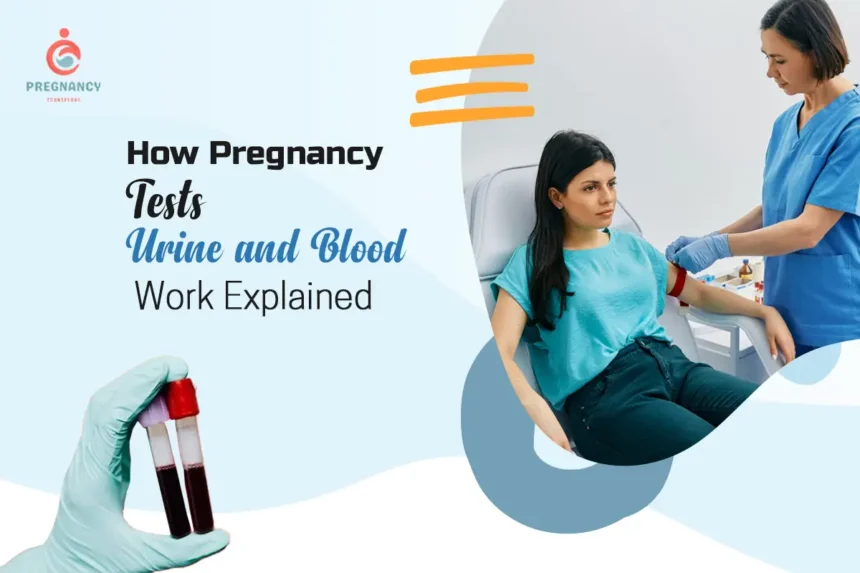Pregnancy is a significant milestone in a woman’s life, and confirming it early is crucial for proper healthcare and planning. Thanks to modern medical advancements, detecting pregnancy has become easier, quicker, and more reliable. The two most common methods are urine tests and blood tests, each with its own advantages, accuracy levels, and recommended usage. Understanding how these tests work can help you make informed decisions and reduce anxiety during this important time.
Understanding Pregnancy Tests
Pregnancy Tests Urine and Blood work by detecting a hormone called human chorionic gonadotropin (hCG), which is produced by the placenta shortly after a fertilized egg attaches to the uterine lining. The presence of hCG in urine or blood is a strong indicator of pregnancy.
While Pregnancy Tests Urine and Blood are convenient and widely used at home, blood tests are more precise and are usually conducted in a clinical setting. Choosing the right test depends on factors such as timing, accuracy needs, and individual health conditions.
Urine Pregnancy Tests
How They Work
Urine pregnancy tests are the most popular method for early detection. These tests typically involve a stick or strip that changes color or displays a symbol when it comes into contact with hCG in the urine. The test can be done at home, which makes it a convenient option for many women.
When a woman becomes pregnant, her body begins producing hCG, which appears in urine about 10 days after conception. Home pregnancy tests detect this hormone and provide results within a few minutes.
Types of Urine Tests
There are two main types of urine pregnancy tests:
- Strip Tests: A simple test strip is dipped into a urine sample, and a line appears if hCG is present.
- Midstream Tests: The test is held directly in the urine stream. These tests are generally more user-friendly and less messy.
Some digital urine tests also provide a clear “pregnant” or “not pregnant” reading, which reduces confusion with interpreting lines or symbols.
Accuracy and Tips
Urine pregnancy tests are highly accurate when used correctly, especially after a missed period. Accuracy can range from 97% to 99% under optimal conditions. However, factors such as testing too early, diluted urine, or improper usage can lead to false negatives.
Tips for reliable results:
- Test in the morning when urine is most concentrated.
- Follow the instructions carefully.
- If the result is negative but pregnancy is still suspected, repeat the test after a few days.
Blood Pregnancy Tests
How They Work
Blood pregnancy tests are conducted in a clinical setting and are more sensitive than urine tests. They measure the exact level of hCG in the bloodstream, which allows for earlier detection and better accuracy.
There are two types of blood tests:
- Qualitative hCG Test: Confirms whether hCG is present in the blood, providing a simple yes/no answer.
- Quantitative hCG Test (Beta hCG Test): Measures the exact amount of hCG, helping monitor pregnancy progression and detect potential issues such as ectopic pregnancy or risk of miscarriage.
Advantages of Blood Tests
- Higher Accuracy: Blood tests can detect pregnancy earlier than urine tests, sometimes as early as 6-8 days after ovulation.
- Quantitative Information: Beta hCG levels help healthcare providers assess the health and progression of pregnancy.
- Reliable for Medical Conditions: Blood tests are recommended for women with irregular periods, fertility treatments, or previous pregnancy complications.
When to Opt for a Blood Test
Blood tests are particularly useful in situations where urine tests may not be conclusive or when early confirmation is needed. Your doctor may recommend a blood test if:
- You have irregular menstrual cycles.
- You need early confirmation for medical reasons.
- You want to monitor hCG levels after fertility treatments.
- There are concerns about complications like ectopic pregnancy or miscarriage.
Comparing Urine and Blood Tests
| Feature | Urine Test | Blood Test |
| Location | Home | Clinic |
| Detection Time | After a missed period | As early as 6-8 days post-ovulation |
| Accuracy | 97-99% | >99% |
| Information | Simple yes/no | The exact hCG level can monitor pregnancy health |
| Cost | Low | Higher than the urine test |
| Convenience | Very convenient | Requires a visit to the clinic |
Both tests are reliable, but blood tests are more sensitive and provide additional information that can be critical for healthcare monitoring.
Understanding False Results
While pregnancy tests are generally reliable, false positives and negatives can occur.
False Negatives:
- Testing too early before hCG levels are detectable.
- Diluted urine due to excessive fluid intake.
- Improper test usage.
False Positives:
- Recent miscarriage or abortion.
- Certain medications contain hCG.
- Rare medical conditions affecting hCG levels.
If there is any doubt, repeating the test or consulting a healthcare provider is recommended.
Tips for Accurate Testing
- Use first-morning urine for home tests.
- Follow instructions exactly as provided with the test kit.
- Check expiration dates on test kits.
- Consult a doctor if you receive conflicting results or have medical concerns.
Conclusion
Both urine and blood pregnancy tests are effective tools for early detection of pregnancy. Urine tests offer convenience and privacy, while blood tests provide higher accuracy and valuable medical insights. Understanding how each test works, when to use them, and how to interpret the results can help women make informed decisions during this important time.
Early detection allows for timely prenatal care, healthier pregnancies, and peace of mind. Whether you choose a home urine test or a clinical blood test, the key is to ensure accuracy and follow up with proper medical guidance when needed.
Pregnancy testing is not just about finding out whether you are pregnant—it is the first step towards a healthy journey for both mother and child.

